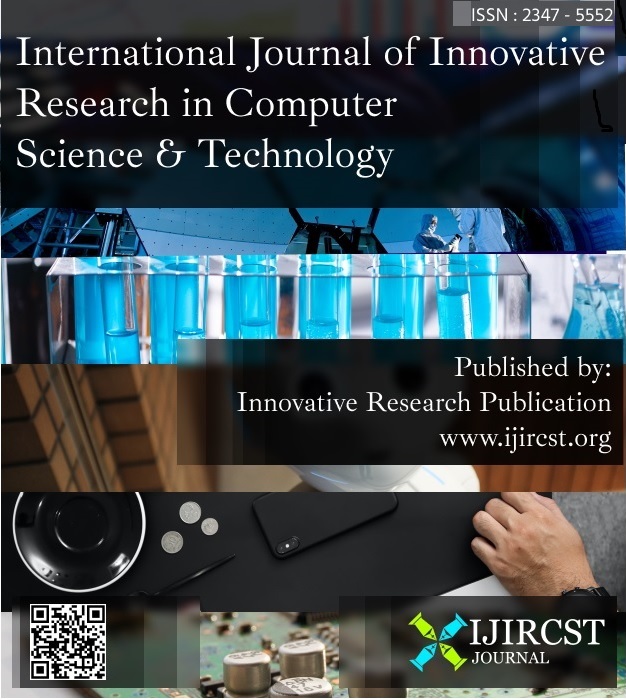A Review Study on Nutritional and Medicinal Importance of Lemon
Keywords:
Cancer, Hypertension, Lemon, Nutrition, ObesityAbstract
For millennia, experts have paid close attention to a tiny evergreen shrub known as a lemon because it has such a magical and mystical significance. It is not only utilized as a food source, but it also has therapeutic and nutritional value. According to nutritionists, eating instead of taking medication improves the odds of long-term healing or reduces the risks of adverse effects. Lemon plants are known for their thorny branches and white blooms with purple borders. Citrus lemon has anti-cancer properties, as well as the ability to prevent kidney stones. Bring a fever to a halt and restore ph balance. Citral, limonene, terpineol, geranyl acetate, and linalyl are phytochemicals found throughout the entire plant. Similarly, if people start their day with lemon, it reduces fat and cleanses the digestive systems; if people apply it to their skin, people will have the most lustrous or acne-free skin ever. If people drink it with honey, it will assist to alleviate sore throats, constipation, or a variety of other ailments. In summary, it is beneficial to people of all ages and genders, from tiny bee stings to big kidney stones.
Downloads
References
S. Mafakheri, S. Hajivand, M. M. Zarrabi, and A. Arvane, “Effect of Bio and Chemical Fertilizers on the Essential Oil Content and Constituents of Melissa officinalis (Lemon Balm),” J. Essent. Oil-Bearing Plants, 2016, doi: 10.1080/0972060X.2014.983995.
Handbook of Functional Beverages and Human Health. 2016. [3] “Golden Berry and Selected Tropical (Açai, Acerola, and Maqui) Juices,” in Handbook of Functional Beverages and Human Health, 2016.
“Coconut Juice,” in Faith in Writing, 2018.
“Pear Juice,” in Handbook of Functional Beverages and Human Health, 2016.
“Guava Juice,” in Handbook of Functional Beverages and Human Health, 2016.
F. Quiriz, “Evaluación de las Porpiedades Antioxidantes y Antimicrobianas de dos especies del hongo medicinal Ganoderma nativo de México y su contribución al desarrollo regional.,” 2008.
S. Denise et al., “Effect of frost on yield and composition of Aloysia triphylla essential oil,” J. Med. Plants Res., 2016, doi: 10.5897/jmpr2015.6016.
V. Srivastava, S. Dubey, and A. Mishra, “A REVIEW ON LEMON GRASS: AGRICULTURAL AND MEDICINAL ASPECT,” Int. Res. J. Pharm., 2013, doi: 10.7897/2230- 8407.04807.
S. A. S. Griz, T. J. Matos-Rocha, A. F. Santos, J. G. Costa, and K. C. Mousinho, “Perfil de plantas medicinais utilizadas pela população do 3o distrito Sanitário de Maceió-AL,” Brazilian J. Biol., 2017, doi: 10.1590/1519-6984.01116.
M. S. A. Karim, S. S. Nasouddin, M. Othman, N. Mohd Adzahan, and S. R. Hussin, “Consumers’ knowledge and perception towards Melicope ptelefolia (Daun Tenggek Burung): A preliminary qualitative study,” Int. Food Res. J., 2011.
R. Khatoon, N. Jahan, S. Ahmad, and A. Shahzad, “In vitro evaluation of antifungal activity of aerial parts of medicinal plants Balanites aegyptiaca Del. and Spilanthes acmella Murr.,” J. Appl. Pharm. Sci., 2014, doi: 10.7324/JAPS.2014.40121.
N. Jahan, R. Khatoon, S. Ahmad, and A. Shahzad, “Evaluation of antibacterial potential of medicinal plant Spilanthes acmella Murr. And its in vitro raised callus against resistant organisms
especially those harbouring bla genes,” J. Appl. Pharm. Sci., 2013, doi: 10.7324/JAPS.2013.31021.
H. Sharma, G. Y. Yunus, R. Agrawal, M. Kalra, S. Verma, and S. Bhattar, “Antifungal efficacy of three medicinal plants Glycyrrhiza glabra, Ficus religiosa, and Plantago major against oral Candida albicans: A comparative analysis,” Indian J. Dent. Res., 2016, doi: 10.4103/0970-9290.191895.
H. Sharma, G. Y. Yunus, A. K. Mohapatra, R. Kulshrestha, R. Agrawal, and M. Kalra, “Antimicrobial efficacy of three medicinal plants Glycyrrhiza glabra, Ficus religiosa, and Plantago major on inhibiting primary plaque colonizers and periodontal pathogens: An in vitro study,” Indian J. Dent. Res., 2016, doi: 10.4103/0970-9290.183135.
S. Kumar, A. K. Wahi, and R. Singh, “Synthesis, computational studies and preliminary pharmacological evaluation of 2-[4-(aryl substituted) piperazin-1-yl] N, N diphenylacetamides as potential antipsychotics,” Eur. J. Med. Chem., 2011, doi: 10.1016/j.ejmech.2011.07.028.
L. Tripathi, R. Singh, and J. P. Stables, “Design & synthesis of N′-[substituted] pyridine-4-carbohydrazides as potential anticonvulsant agents,” Eur. J. Med. Chem., 2011, doi: 10.1016/j.ejmech.2010.11.030.
A. Gaurav, V. Gautam, and R. Singh, “An Overview on Synthetic Methodologies and Biological Activities of Pyrazoloquinolines,” Mini-Reviews Med. Chem., 2012, doi: 10.2174/13895575110091194.
A. Chaudhary, N. Tiwari, V. Jain, and R. Singh, “Microporous bilayer osmotic tablet for colon-specific delivery,” Eur. J. Pharm. Biopharm., 2011, doi: 10.1016/j.ejpb.2011.01.004.
S. Sahu, D. B. Singh, K. K. Yadav, D. V. Rai, and R. Dixit, “Computational identification and functional annotation of miRNAs in medicinal plant Helianthus petiolaris,” Netw. Model. Anal. Heal. Informatics Bioinforma., 2013, doi: 10.1007/s13721-013-0044-8.
R. K. Pareek, K. Singh, and R. Ram, “Sequestration of heavy metals from petroleum refinery effluent by active carbon adsorbents precursor to rice husk and sugarcane bagasse,” Ann. Biol., 2021.
A. Nayak and M. T. Nayak, “Oral squamous papilloma occurring on the palate with review of literature,” J. Exp. Ther. Oncol., 2016.
R. Rastogi, V. Budhiraja, S. K. Jain, N. Sharma, R. Garg, and H. Nafees, “Morphological pattern of Crista terminalis, Musculi pectinati and Taenia sagittalis with applied significance,” J. Morphol. Sci., 2016, doi: 10.4322/jms.092015.
N. Agarwal, J. Dhawan, D. Kumar, A. Anand, and K. Tangri, “Effectiveness of two topical anaesthetic agents used along with audio visual aids in paediatric dental patients,” J. Clin. Diagnostic Res., 2017, doi: 10.7860/JCDR/2017/23180.9217.
A. L. Parker, M. Kavallaris, and J. A. McCarroll, “Microtubules and their role in cellular stress in cancer,” Frontiers in Oncology. 2014, doi: 10.3389/fonc.2014.00153.
N. Swarup, M. T. Nayak, N. Arun, S. Chandarani, and Z. Chowdhary, “Chronic non-healing ulcer of the oral cavity: tuberculosis or carcinoma?,” J. Exp. Ther. Oncol., 2018.
